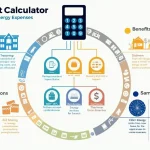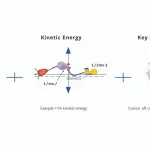Prediction Analyzer
Is this tool helpful?
How to Use the Prediction Analysis Tool Effectively
The Prediction Analysis Tool is designed to help you extract and analyze predictions from any given text. Follow these simple steps to make the most of this powerful tool:
- Enter the text: In the provided textarea, paste or type the text containing predictions you want to analyze. For example, you could input:
- “According to experts, renewable energy will account for 50% of global electricity production by 2030, with 80% confidence. We’ll verify this through official energy reports.”
- “Scientists predict a 70% chance of discovering extraterrestrial microbial life on Mars by 2040, which can be confirmed through Mars rover missions.”
- Click “Analyze Predictions”: Once you’ve entered the text, simply click the blue “Analyze Predictions” button. The tool will process your input and generate a comprehensive analysis.
- Review the results: The analysis will appear below the input form, presenting a bulleted list of extracted predictions and a detailed table for easy reference.
- Copy the results: If you need to save or share the analysis, use the “Copy to Clipboard” button to easily transfer the results to another document or application.
Understanding the Prediction Analysis Tool: Definition, Purpose, and Benefits
The Prediction Analysis Tool is a sophisticated web-based application designed to streamline the process of extracting and organizing predictions from complex texts. Its primary purpose is to help researchers, analysts, and decision-makers quickly identify and categorize future projections, enabling more efficient analysis and strategic planning.
Key Features and Capabilities
- Prediction Extraction: The tool uses advanced natural language processing algorithms to identify and isolate predictions within the input text.
- Date Recognition: It automatically detects and extracts the projected dates or timeframes associated with each prediction.
- Confidence Level Identification: The tool recognizes and reports any stated confidence levels or probabilities linked to the predictions.
- Verification Method Analysis: It extracts information on how each prediction can be verified or measured for accuracy.
- Structured Output: Results are presented in both a concise bulleted list and a detailed table format for easy comprehension and further analysis.
Benefits of Using the Prediction Analysis Tool
- Time-saving: Manually extracting predictions from lengthy reports or articles can be time-consuming. This tool significantly reduces the time required for this task, allowing users to focus on analysis rather than data collection.
- Improved Accuracy: By using a consistent algorithm, the tool minimizes human error in identifying and categorizing predictions, ensuring a more reliable dataset for analysis.
- Enhanced Organization: The structured output makes it easy to compare and contrast different predictions, identify trends, and prioritize focus areas based on confidence levels or timeframes.
- Facilitates Strategic Planning: By clearly presenting predictions and their associated details, the tool supports more informed decision-making and long-term planning processes.
- Promotes Critical Thinking: The inclusion of verification methods encourages users to consider how predictions can be tested or validated, fostering a more rigorous approach to future projections.
Addressing User Needs and Solving Specific Problems
The Prediction Analysis Tool addresses several key challenges faced by professionals who work with future projections and forecasts:
1. Information Overload
In today’s data-rich environment, extracting relevant predictions from extensive reports, articles, or research papers can be overwhelming. The tool solves this by automatically identifying and isolating predictions, allowing users to quickly focus on the most pertinent information.
2. Inconsistent Prediction Formats
Predictions can be stated in various ways across different sources, making it difficult to compare and analyze them consistently. The tool standardizes the extraction process, ensuring that all predictions are presented in a uniform format regardless of their original phrasing.
3. Missed Context
When manually reviewing texts for predictions, it’s easy to overlook important details such as confidence levels or verification methods. The tool systematically captures these crucial elements, providing a more comprehensive view of each prediction.
4. Time-Consuming Data Entry
Traditionally, analysts might need to manually enter predictions into spreadsheets or databases for further analysis. The tool’s structured output eliminates this step, providing ready-to-use data that can be easily copied and pasted into other analytical tools.
5. Difficulty in Tracking Long-Term Predictions
Long-term predictions can be easily forgotten or lost in the shuffle of day-to-day operations. By organizing predictions with their associated dates, the tool facilitates better long-term tracking and follow-up.
Practical Applications and Use Cases
The Prediction Analysis Tool has a wide range of applications across various industries and disciplines. Here are some examples of how it can be used effectively:
1. Market Research and Trend Analysis
Market researchers can use the tool to analyze industry reports and expert opinions, extracting predictions about future market trends, consumer behavior, and technological advancements. For example:
- Input: “Industry experts predict that by 2025, 60% of all new car sales will be electric vehicles, with 75% confidence. This can be verified through global automotive sales data.”
- Output:
- Prediction: 60% of all new car sales will be electric vehicles
- Date: 2025
- Confidence: 75%
- Verification: Global automotive sales data
This structured information allows researchers to quickly compile and compare predictions from multiple sources, identifying consensus views and potential outliers in market forecasts.
2. Policy Planning and Government
Policymakers can utilize the tool to analyze reports on social, economic, and environmental trends, helping to inform long-term policy decisions. For instance:
- Input: “Demographic experts project that by 2040, 30% of the population in developed countries will be over 65 years old, with 90% certainty. This can be confirmed through national census data.”
- Output:
- Prediction: 30% of the population in developed countries will be over 65 years old
- Date: 2040
- Confidence: 90%
- Verification: National census data
Such analysis can help governments plan for future healthcare needs, social services, and economic strategies to support an aging population.
3. Scientific Research and Development
Researchers can use the tool to analyze scientific papers and conference proceedings, extracting predictions about future discoveries or technological breakthroughs. For example:
- Input: “Quantum computing researchers predict a 50% probability of achieving quantum supremacy for practical applications by 2030. This can be verified through peer-reviewed demonstrations of quantum algorithms outperforming classical computers on real-world problems.”
- Output:
- Prediction: Quantum supremacy achieved for practical applications
- Date: 2030
- Confidence: 50%
- Verification: Peer-reviewed demonstrations of quantum algorithms outperforming classical computers
This structured information can help research institutions and funding bodies prioritize resources and set realistic timelines for emerging technologies.
4. Financial Forecasting and Investment
Financial analysts and investors can use the tool to process economic reports and expert opinions, extracting predictions about future market conditions, interest rates, and economic indicators. For instance:
- Input: “Leading economists forecast a 70% chance of global GDP growth exceeding 3.5% in 2024, based on current trends. This can be verified through official GDP reports from international financial institutions.”
- Output:
- Prediction: Global GDP growth exceeding 3.5%
- Date: 2024
- Confidence: 70%
- Verification: Official GDP reports from international financial institutions
This analysis can inform investment strategies, risk assessments, and portfolio management decisions.
5. Environmental Planning and Climate Change Mitigation
Environmental scientists and policymakers can use the tool to analyze climate reports and research papers, extracting predictions about future environmental conditions and the impact of climate change. For example:
- Input: “Climate models predict an 80% likelihood of global average temperatures rising by 1.5°C above pre-industrial levels by 2050 if current emission trends continue. This can be verified through global temperature records and satellite data.”
- Output:
- Prediction: Global average temperatures rising by 1.5°C above pre-industrial levels
- Date: 2050
- Confidence: 80%
- Verification: Global temperature records and satellite data
Such analysis can inform climate action plans, adaptation strategies, and international environmental agreements.
Frequently Asked Questions (FAQ)
Q1: Can the tool analyze predictions in languages other than English?
A1: Currently, the tool is optimized for English text. However, future updates may include support for additional languages to broaden its applicability.
Q2: How does the tool determine the confidence level of a prediction?
A2: The tool extracts confidence levels or probabilities that are explicitly stated in the text. If no confidence level is mentioned, the tool will not assign one.
Q3: Can the tool handle multiple predictions within a single input?
A3: Yes, the tool is designed to identify and extract multiple predictions from a single input text, presenting each one separately in the results.
Q4: Is there a limit to the length of text that can be analyzed?
A4: The tool is designed to handle texts of various lengths. However, for optimal performance and quicker results, it’s recommended to focus on relevant sections containing predictions rather than inputting entire lengthy documents.
Q5: How does the tool determine the date or timeframe of a prediction?
A5: The tool uses natural language processing to identify date references or timeframes associated with each prediction. This includes specific years, decades, or relative time expressions (e.g., “in the next 5 years”).
Q6: Can the tool generate predictions or only analyze existing ones?
A6: The tool is designed to analyze and extract existing predictions from input text. It does not generate new predictions or perform predictive analysis on its own.
Q7: How can I integrate this tool into my existing workflow or software?
A7: The tool is web-based and can be easily incorporated into various workflows. You can manually input text or potentially use API integrations (if available) to automate the process of feeding data into the tool and extracting results.
Q8: Does the tool provide any visualization of the extracted predictions?
A8: Currently, the tool provides a structured text output with a bulleted list and a table. While it doesn’t generate visualizations directly, the organized output can be easily used to create charts or graphs in other applications.
Q9: How often is the tool updated or improved?
A9: The development team is committed to continual improvement of the tool. Updates may be released periodically to enhance performance, add new features, or refine existing capabilities based on user feedback and technological advancements.
Q10: Can the tool analyze hypothetical or conditional predictions?
A10: Yes, the tool can identify and extract conditional predictions. However, users should be aware that the certainty and verifiability of such predictions may vary, and this will be reflected in the tool’s output.
By addressing these common questions, users can gain a deeper understanding of the Prediction Analysis Tool’s capabilities and limitations, enabling them to use it more effectively in their work and decision-making processes.
Important Disclaimer
The calculations, results, and content provided by our tools are not guaranteed to be accurate, complete, or reliable. Users are responsible for verifying and interpreting the results. Our content and tools may contain errors, biases, or inconsistencies. We reserve the right to save inputs and outputs from our tools for the purposes of error debugging, bias identification, and performance improvement. External companies providing AI models used in our tools may also save and process data in accordance with their own policies. By using our tools, you consent to this data collection and processing. We reserve the right to limit the usage of our tools based on current usability factors. By using our tools, you acknowledge that you have read, understood, and agreed to this disclaimer. You accept the inherent risks and limitations associated with the use of our tools and services.







